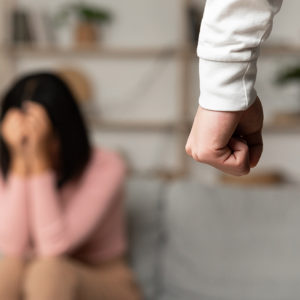Two numbers are essential to understanding the real-life effect the Supreme Court’s decision in U.S. v. Rahimi will have: 500 percent and 50 percent.
During a domestic violence incident, the likelihood of death increases by 500 percent when a firearm is present in the home. Of all intimate-partner-related murders of women in a given year, 50 percent involve the use of a firearm.
Hundreds of peaceful advocates recently gathered outside the Supreme Court during oral arguments in Rahimi. Now, the court must decide whether to uphold a nearly 30-year-old law that keeps guns out of the hands of domestic abusers — a law that has saved countless lives. If the court ultimately succumbs to corporate gun lobbyists and eliminates the law in the name of the Second Amendment, it’s domestic violence survivors who will pay the price. We must look beyond Rahimi to long-term policy solutions to ensure women, children and other survivors are protected from gun violence.
Despite claims by MAGA extremists and corporate gun lobbyists, this case is not about “bad” gun owners. It’s about the survivors of domestic violence. The federal law at the heart of Rahimi prohibits the subject of an active domestic violence restraining order from possessing a firearm. This law has long been considered a common sense, effective and live-saving regulation because domestic violence is considered “pervasive, deadly and inextricably linked with firearms.”
Domestic violence is a pattern of abusive behavior used by one individual to gain power and control over another within a relationship. This behavior can range from emotional manipulation and financial control to physical and sexual violence. It extends beyond intimate partners and can include anyone else in a home — like children. It can happen to anyone, but it overwhelmingly happens to women. In the United States, one in three women 18 years and older will experience domestic violence at some point.
The death count speaks for itself. On average, 50 people in the United States are killed every month by a current or former intimate partner. In 2017, more than a third of all child deaths involving firearms were related to domestic violence. Even when firearms aren’t used to kill, they’re used by abusers as tools to control, terrorize and threaten victims. In 2016, 4.5 million women were threatened with a firearm. With 433.9 million firearms in circulation, this makes the United States uniquely deadly for victims of abuse.
Laws like the one at stake in Rahimi and other forms of domestic violence restraining orders are effective. States that restrict access to guns for people subject to active domestic violence restraining orders have seen a 13 percent reduction in intimate partner homicides involving firearms. We can only hope that this law is upheld as constitutional.
However, even if the Supreme Court upholds the law in Rahimi, the grim reality is that domestic violence survivors will continue to be terrorized by gun violence. We need to look beyond this ruling to the bigger fight ahead. Although we must ensure firearms are removed from domestic violence situations, we must also provide survivors with meaningful access to as many avenues for justice and accountability as possible — ranging from restorative and transformative justice to financial restitution and long-term shelter options.
One thing we can all do to support survivors is holding our elected officials accountable for fully implementing last year’s landmark Bipartisan Safer Communities Act, which partly closes the dating partner loophole in federal firearm prohibitors. We already know that closing the dating loophole saves lives. Twenty-eight states and the District of Columbia have passed legislation addressing the “boyfriend loophole” within their jurisdictions, which has led to 16 percent fewer intimate partner gun homicides.
The Americans who will bear the consequences of Rahimi are not the extremist justices, gun lobbyists and lawmakers on both sides of the aisle who refuse to make our communities safer. At stake in Rahimi are the lives of some of the most vulnerable and marginalized people in America. We must ensure that their safety and security do not lie exclusively in the hands of an activist Supreme Court.



